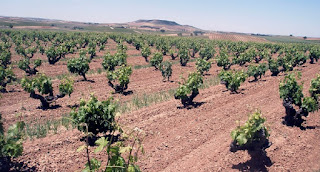While other Spanish wines have achieved
international recognition, Flor de Pingus is one of the very few that has
joined the ranks of the world’s most coveted wines.
I first tasted Flor de Pingus in New York in
2006, and I simply had to find out more about the wine and the wine maker,
Peter Sisseck. The following year I was in the cellar of his first project in
Ribera del Duero, Hacienda Monasterio, where I had a small epiphany. Each
barrel we tasted spoke to me in ways that took me to a different level of
appreciation entirely. Let's just say I was impressed, immensely.
Peter is a visionary Danish winemaker, who learned his craft in Bordeaux and California, and then found his way almost by chance to the Ribera del Duero region of Spain. While creating Hacienda Monasterio he found small plots of ancient, gnarled vines, from which he created Pingus - and a legend was born.
Peter is a visionary Danish winemaker, who learned his craft in Bordeaux and California, and then found his way almost by chance to the Ribera del Duero region of Spain. While creating Hacienda Monasterio he found small plots of ancient, gnarled vines, from which he created Pingus - and a legend was born.
“Ribera has a lot of purity, a lot of nobility, but at the same time it’s a very rough area. It’s less civilized than many other wine regions in the world, but it has an enormous amount of grace and character. The purity and honesty is what I love.” - Peter Sisseck
Flor de Pingus is an evolution of the Pingus project, being created from a further 18 parcels of vines in the La Horra area, averaging 35 years in age, and bearing the same peerless Sisseck hallmark of purity and freshness. These plots have been farmed biodynamically since 2005.
We are very pleased to have been able to offer the new 2017 Flor
de Pingus to our clients for just £650 per 12 bottles, or £325 per 3 magnums
"[2017
was] an early harvest characterized by ripe aromas, great extract and low
acidity.”
Peter Sisseck
Peter Sisseck
A chunky and pretty young wine with blueberries and blackberries and chocolate. Chewy tannins that are polished and fresh. Full-bodied. Round and sexy. Shows lots of potential.
94-95pt, James Suckling


Comments
Post a Comment